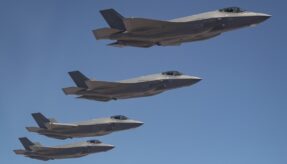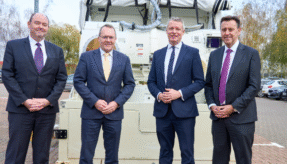
The Government is ramping up investment in new and emerging technologies for the Army and Royal Navy to provide a major boost in lethality and the effectiveness of their military operations around the world.
The Army will deliver a tenfold increase in lethality over the next ten years by harnessing firepower, surveillance technology, autonomy, digital connectivity, and data – leading the way in NATO in its use of technology to change how it fights, improving speed and accuracy.
The Royal Navy will also ramp up new drone systems as part of an evolution in how it fights, moving towards a mix of crewed, uncrewed, and increasingly autonomous capabilities to secure the North Atlantic for the UK and NATO.
Following the Prime Minister’s commitment to the largest sustained increase to UK defence spending since the end of the Cold War, the Ministry of Defence will move to spending at least 10% of its budget on drones and novel technologies. This delivers on the government’s commitment to invest £5bn on new drone and laser weapon technology, supporting thousands of jobs around the country, as part of the Government’s Plan for Change.
Key to increasing Army lethality will be the ability to rapidly find and strike enemy targets. Prioritisation of the ‘Digital Targeting Web’ will increase the pace and scale of change already being tested through Army initiatives like ASGARD, which is being delivered to British troops deployed with the NATO Forward Land Forces (FLF) in Estonia.
The government has launched a procurement for a new open framework to encourage defence companies to submit concepts for new digital systems that could be integrated into ASGARD. The aim is to exploit advanced technologies such as AI and uncrewed capabilities, enabling the development of advanced digital ‘Decision’ making on the battlefield.
Defence Secretary, John Healey MP said: “We will invest in technology to give our troops the edge in the battlefields of the future; transforming our Armed Forces and boosting our warfighting readiness.
“This will increase our lethality, provide a powerful deterrent to our adversaries, and put the UK at the leading edge of innovation in NATO.
“We will back UK business to innovate at a war time pace; creating highly skilled jobs and fast-tracking the weapons of tomorrow into the hands of our warfighters, as part of our Government’s Plan for Change.”
To boost the Royal Navy’s aircraft carrier operations, the government will invest in the cutting-edge of NATO capability—moving to have the first ‘hybrid’ carrier airwings in Europe, where the aircraft carrier’s F-35B jet fighters are complemented by autonomous collaborative platforms in the air and drones.
The Navy is moving towards a “New Hybrid” fleet that exploits autonomy and uncrewed systems – along with conventional warships – for a mix of equipment and weapons. The UK’s Queen Elizabeth class aircraft carriers are two of the most powerful warships the UK has ever built and, following the Strategic Defence Review, the Royal Navy’s Carrier Strike programme will evolve into ‘hybrid’ carrier airwings, exploiting the latest technology to combine crewed and uncrewed platforms to make the carrier an even more potent form of deterrence.
Image: Alex Segre / Shutterstock.com
If you would like to join our community and read more articles like this then please click here








